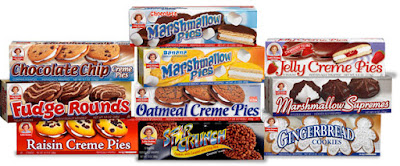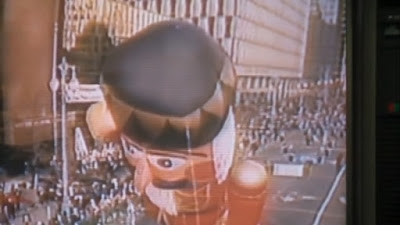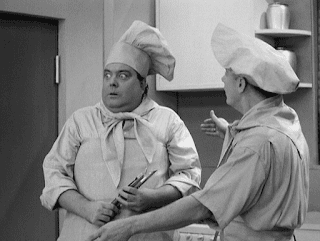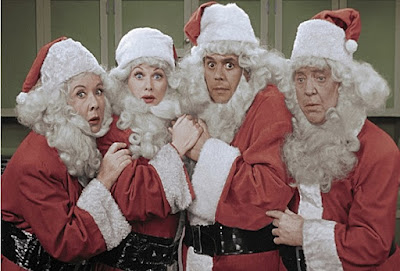I've written about a few airlines here on YesterYear, such as Spirit Airlines, Kiwi Air, Business Express, and AccessAir.
To continue honoring airlines of the past, I decided today that we'll take a look back at the third and brief run of "National Airlines."
Any old-timers or airline history buffs likely recognize the name National Airlines. The original National Airlines was a major United States airline that operated from 1934 to 1980. For most of its existence, the airline was based and headquartered in Miami, Florida. At its height, National had a network of flights that reached coast-to-coast. From 1970 to 1978, National, Braniff, Pan American, and Trans World (TWA) were the only airlines permitted to operate scheduled flights to Europe. This first iteration of National Airlines ended when it was acquired by Pan Am in 1980.
A second iteration of National Airlines ran from 1976 to 1986 as a cargo-only airline. It was owned by United Air Carriers and ceased business after filing bankruptcy in May 1986.
The third time an airline took to the skies using the name National is the one I'm most interested in discussing today. This version of National was immediately on my radar and has always been one of those companies I wished would have succeeded.
I've always been a little plane nerd, especially growing up after discovering that I could never fly like Superman, so planes became the next best thing. In the 90s, I was keen on following several new "upstart" airlines that began popping up nationwide. These upstarts in the mid to late 90s fought uphill battles from the get-go, and hardly any of them are still in business today. You can expect many of them to eventually be covered here in the Airlines of YesterYear series.
Why was I so interested in National Airlines? First and foremost, they flew the Boeing 757-200 aircraft. One of my only regrets about flying for the airline I do is that I'll never get to fly the 757. We don't own that type of aircraft, and as an Airbus-only airline, we never will. The Boeing 757 is a fast, powerful, sleek airplane that I would have loved flying. Oh, well.
Secondly, their decision to be based out of Las Vegas piqued my interest. In the 90s, Vegas attempted an overhaul as a family-friendly location. I was interested in the construction of mega-casinos built with family-friendly themes like Pyramids, Castles, and Pirate Ships. For a time in the early 00s, I must have traveled to Las Vegas at least 10 times in 5 years between trips with my wife, my father-in-law, friends, and more. I haven't really been back to Las Vegas since 2013, about the time the casinos began to de-theme in favor of "modern" aesthetics. But that's an article for a different day.
Third, their paint and logo stood out as different. At a time when every airline was trying to take color OUT of their palate and go toward as much white and softer colors as possible, National arrives on the scene with a dark black/purple tail and a ribbon shaped like an "N" in bright green, yellow, orange, navy blue and purple. Admittedly, most of the plane is white, but compared to other airlines, it stood out of the pack at the time.
I was even more intrigued after reading this article, and then in 2004 after the airline had been out of business for a few years already, I was working as a "Doggie Daycare Specialist" at a Petsmart "PetHotel" dog kennel on Long Island while I gained the flight time needed to get hired at an airline.
One day, my boss commented that she had briefly worked for "the airlines at JFK." This, of course, made my eyebrows raise. When I asked which one, she said, "National... the Red Rock one."
I was very excited! While I enjoyed working with the dogs, hearing that she worked for National was the highlight of my week. During the remainder of my tenure there, I'd ask for stories about her time working in the airline business. I can't remember any of the specifics now, but her stories as an Airport Operations Manager were exciting for someone like me looking to get involved in this crazy industry.
One thing she told me about National was confirmed by nearly every article or web page dedicated to the history of this airline:
This iteration of National Airlines was simply created to bring tourists to Las Vegas.
This National Airlines all started with a man named Michael Conway. In 1982, Conway was one of the founders of Tempe, Arizona-based America West Airlines. Conway would become Chief Executive Officer (CEO), and in 1991, after several years of financial losses following extremely rapid growth, the airline declared bankruptcy. The Chairman of America West, William Francke, would publically clash with Conway. Francke blamed personality conflicts and Conway's desire for rapid growth for the financial failures of the company. Eventually, Conway would be excused from his role as CEO in January of 1994. America West would subsequently merge with US Airways, then with American Airlines a decade later.
While working at the Arizona-based airline, Conway noticed no airline used Las Vegas as a hub. In fact, due to a softening of the market, airlines had begun moving planes off the mostly leisure Las Vegas route to more profitable business destinations. Las Vegas's McCarran International Airport saw a drop in traffic between 1997 and 1998 that reached 2.5 percent.
With the drop in traffic, casino and hotel owners began to get nervous. City-wide, the owners of Las Vegas mega-casinos had already started construction of 21,000 new hotel rooms due to be completed in 2001. These new rooms alone would cause the demand for an additional 12,000 airline seats.
Conway looked at all this information and decided he held a winning hand. Mr. Conway called his contacts in the airline industry from his tenure at America West and began to make contacts in the Las Vegas casino industry.
On April 12, 1995, "New Airline, Inc." was created through $800,000 (and later $2.8 million) in seed money. Soon, employees and executives were onboarded as the airline established an office on Spencer Street, just north of McCarran Airport's perimeter road.
As the airline began the behind the scenes work, gambling giant Harrah's Entertainment (now Ceasars Entertainment) and the Rio Hotel and Casino, Inc (now a part of Caesars Entertainment) invested $15 million apiece into the new startup. Wexford Capital Investments, who had previously invested in defunct airlines MarkAir (Alaska) and Midway Airlines (North Carolina), invested $7 million into New Airline, Inc.
On July 30, 1998, a press conference was called at McCarran International Airport. There, the executives of New Airline, Inc. formally announced the launch of National Airlines. National planned to operate flights from Las Vegas to various destinations with the singular aim of bringing visitors to Sin City. The airline called it a win-win for themselves, the casino and hotel operators, and the city's residents. The airline would profit off passenger traffic, while the casinos would profit off the money spent gambling and hotel rooms. The city and its residents were set to benefit from job creation and other economic factors brought upon by the influx of new tourists, thanks to the new National Airlines.
Oddly enough, the airline had not yet legally acquired the rights to use the name National Airlines. At the time, Pan American Liquidation Corporation owned the name following the merger of the original National Airlines and Pan American World Airways. In the days following the press conference, National and Pan Am Liquidation Corp. would come to a deal quickly. New Airline, Inc would be officially renamed National Airlines days later.
National was quick to introduce several customer service initiatives. A frequent flyer program, National Comps, was unlike other airline programs where travelers collect miles to redeem on the airline. Instead, customers of National would collect points. Those points could then be redeemed to upgrade to First Class, redeemed for free flights, or redeem at several Las Vegas casinos and hotels. National would also open "Flight Centers" in the lobby of Harrah's and The Rio. There, they offered assistance with ticket reservations and baggage check-in.
Considering Southwest Airlines as its biggest competitor, National took a page from its playbook by utilizing the cost savings of a simplified single fleet type, the Boeing 757-200 aircraft. These aircraft were not only bigger than Southwest's Boeing 737s but were more versatile in having the ability to operate short hops and longer routes. The larger cabin on the 757 also provided more room for passenger comfort. National operated these 757s with 22 first-class seats and 153 economy-class seats under a 33-inch seat pitch (the distance between seats). Compared to today, in 2023, Delta Air Lines operates the 757 with 20 First Class, 22 Enhanced Economy (Delta Comfort), and 150 Economy seats using a 31-inch pitch.
As a cute reference to the Boeing 757, the airline's 1-800 reservation number was 1-888-757-JETS. The airline also selected the callsign "RedRock," in reference to the Las Vegas Red Rock Canyons.
The first 757 arrived in February 1999, and the second in April. The FAA granted National Airlines their Air Operator's Certificate on May 20, 1999. Seven days later, on May 27, National Airlines departed Las Vegas for the first time with flights headed to Los Angeles (LAX) and Chicago's Midway Airport (MDW).
Initially, National Airlines planned to launch with only 4 aircraft, but by August 1999, the fleet had ballooned up to 11 planes. Michael Conway, CEO of National Airlines, said he expected to acquire 10 new planes annually until reaching 40 aircraft. Instead of the slow and steady growth promised to investors, Conway was again pushing for rapid growth; a foreboding reminder of his time at America West.
Initially, the airline served New York's JFK, San Francisco, Dallas, Philadelphia, and Miami from Las Vegas. All of these cities were large international gateways and large cities unto themselves. The hope for National was to attract customers from these large markets and eventually strike deals with international airlines with operations at these hubs. These international airlines would have provided customers from around the globe to be flown to Las Vegas on National, but as far as this author can tell, twenty years later, no deals were ever made.
By August 1999, the airline had carried its one hundred thousandth customer.
The airline continued to develop the customer experience and opened a members-only-frequent flyer lounge in Las Vegas in October. In December 1999, the airline unveiled National Vacations, a vacation package travel agency. National Vacations would sell airfare combined with hotel stays at one of several Las Vegas casinos and hotels.
At the dawn of the new millennium, National had reason to be happy. They announced their first profit in February 2000, a mere 7 months after its first flight. The airline also expected to post its first profitable quarter in June.
All the while, Las Vegas passenger traffic steadily declined.
The airline began approaching a major milestone in April: flying their one-millionth customer. The "Thanks A Million" promotion drove increased ticket sales, with the hope that if you were the lucky millionth customer, you'd receive free flights for a year.
On April 12, 2000, that customer boarded flight 11 from New York's JFK to Las Vegas and was celebrated with much fanfare. The rest of the customers on the flight received a coupon for one free round trip with National. Also, as part of the "Thanks A Million" promotion, any passenger flying on any National flight on the day of the millionth customer received a 20% off coupon for a future National Airlines flight.
On June 26, the airline announced that they had reached an agreement with Boeing for 20 more 757-200s, with 8 being firm orders and 12 options for future planes. Four joined the airline rather quickly, and the airline added service to Newark and Washington's Reagan National Airport.
In mid-2000, National Vacations launched an interesting program called "National Nights," where a customer would receive deeply discounted travel packages on air and hotel reservations if the customer was to fly on select red-eye flights out of Chicago, Miami, or Philadelphia. This was a great concept to tempt budget-conscious customers into buying a travel package while filling seats on the less-preferred red-eye flights.
Shortly after the announcement of the new Boeing aircraft, the airline stated it was looking at an IPO (Initial Public Offering) of stock shares to raise money. Initially, the company said it planned to raise over $200 million and would use the money to pay off debt and pay for planned growth. With the new cash, National expected to begin several new destinations. Some rumored destinations, but never made official, were Vancouver, Toronto, Montreal, and Mexico City. These were all destinations that would take National international.
A newsworthy event occurred on July 27, 2000, when a man armed with a handgun rushed passed JFK Airport security and ran onto Flight 19. The flight was in the process of boarding passengers, and the gunman held the two pilots hostage while passengers and flight attendants ran from the airplane. After a 5 hour stand-off, the deranged gunman surrendered to the authorities. This was, thankfully, the only notable incident that occurred during this iteration of National Airlines.
The airline took delivery of one more Boeing 757 in early November, bringing the fleet total to 16.
Then, on December 6, 2000, National Airlines filed for Chapter 11 Bankruptcy Protection. The airline had been losing $2 million per month and needed the Bankruptcy Courts to stem the bleeding.
Things stagnated for the airline throughout 2001, with no new aircraft deliveries and only one new destination. The airline added flights to Chicago's O'Hare International Airport. In addition to their previous Chicago Midway flights, the airline now provided service to both major airports in Chicago.
Still losing money in June 2001, the airline obtained a court order preventing Harrah's Entertainment from collecting payments on their $70 million investment loans. Harrah's, at the time, owned 49 percent of the airline.
In July, the company played coy with their plans but admitted to trying to broker deals with an undisclosed "major travel entity with strong ties to Las Vegas." At the time, it was reported that the airline had over $100 million in debts. There was hope for the employees and business when discussions began between National and other parties for financing. The largest financier that entertained discussions was Carl Icahn, the corporate raider infamous for dismantling the once-great Trans World Airlines (TWA).
Wexford Capital, one of the initial investors in the airline, was rumored to have looked at acquiring National Airlines outright. This acquisition would also involve Icahn. According to a report from Flight International Magazine, these talks were ongoing, specifically the September 10, 2001 edition.
We all know what happened the very next day.
The discussions with Wexford and Icahn stopped in the aftermath of 9-11. By November, the airline had lost $33 million just in the 2 months following the September 11 attacks. It looked like the end of the line for National until Michael Conway announced at the 11th hour that he had secured significant investments from several different investors with the backing of Harrah's Entertainment.
Following September 11, the United States government created the Air Transportation Stabilization Board to provide funding for the airlines that had been shut down and were suffering from extremely low travel demand. National Airlines applied for $22 million in loans, stating in the application the money would be used to purchase smaller aircraft for shorter routes to increase profits.
The ATSB rejected the application, leaving National to fend for itself.
The extreme decline in air travel demand saw several airlines' demise globally. Looking at a silver lining for National, these airline shutdowns led to a surplus of aircraft on the market. Despite previously stating the desire for more miniature airplanes, National capitalized on the available planes and picked up 3 additional 757s in early 2002. Despite the cost savings of the smaller aircraft, National claimed that keeping a common fleet type would be more cost-effective than starting service with a new fleet type.
In the summer of 2002, the airline announced the expectation of service to three new cities: Seattle, West Palm Beach, and Reno.
Reno seemed like a surefire hit for the company. As the second largest gambling city in Nevada, yet often viewed as less expensive than Las Vegas, the city saw a high travel demand. The short flight time between Las Vegas and Reno also meant that flights could be fit into existing schedules, thereby increasing the plane and flight crew's productivity.
In August 2002, the Vacations division began offering "Stop-Over Packages." This quirky promotion was for any passenger flying between two cities, and as a product of National's hub-and-spoke route structure, had to make a connection in Las Vegas. The promotion offered discounts on airfare and hotel reservations if, rather than take a short connection in Vegas, they spent the night at one of their partner casinos/hotels before continuing to their destination the next day. I have to give them credit for their creativity.
On Wednesday, November 6, 2002, Flight 354 departed Las Vegas headed for Dallas, Texas. It was National Airlines' final departure.
When the airline ceased operations, approximately 1,500 people lost their jobs.
So, what went wrong?
It's unfair to pin the entire blame on 9-11. The airline had been struggling financially for over a year by September 2001. National Airlines started with a great setup with casino and hotel partners and a vast stockpile of startup capital.
When they began, Las Vegas was the only major city in America without an airline hub. Traffic at the airport was high enough, and demand soon increased with the expansion of the mega-casinos on The Strip.
One major problem was that most customers were tourists. While they appreciate full service at a low ticket price, most would prefer a low fare over any service. There also wasn't much business travel demand in Las Vegas, where many airlines profit.
Of course, after September 11, fuel prices and rock-bottom demand for flights put the final nail in the airline's coffin, so to speak.
Perhaps National's CEO, Michael Conway, didn't learn from his time at America West and expanded National too fast, too soon. Maybe he had learned his lesson, and the airline's struggles were all because of other factors, but history indeed repeated itself.
Given the current operation in Las Vegas, now 20 years later, National Airlines would likely be doing very well today. Several airlines like Southwest, Spirit, and Allegiant Airlines consider Las Vegas one of their major operation hubs. Personally, I think National would fit right in. Unlike post 9-11 travel, post-pandemic America has seen unprecedented demand for travel, and I believe National could have succeeded today.
As they say, timing is everything. Oh, what could have been!











.png)





Comments
Great read!! I flew on N7 a few times when I was younger. Wished they would have done much better financially.
ReplyDeleteFortunately in the time since N7, other airlines have met the needs of the Las Vegas air travel market.